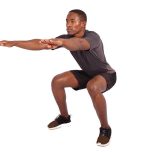Styles and Benefits of Zumba: Tips for a balanced workout

Zumba is a vibrant, dance-based cardio workout inspired by Latin and global music.
Created by Colombian fitness trainer Beto Perez in the early 2000s, it quickly became a worldwide fitness phenomenon.
Today, Zumba classes are known for their energetic moves, fun atmosphere, and ability to get people moving, regardless of fitness level.
A standard Zumba session begins with a warm-up, followed by choreographed dance routines that progressively build in complexity.
You’ll likely repeat steps throughout a song, helping you learn as you go. Don’t worry if you miss a step, consistency leads to improvement.
Classes wrap up with a cooldown and stretches to safely bring your heart rate down.
Over time, the Zumba brand has expanded to include multiple specialised formats.
Here are some of them:
- Zumba Step: Combines traditional Zumba with step aerobics, targeting legs, glutes, and core.
- Zumba Toning: Incorporates light weights to help tone the arms and core.
- Aqua Zumba: Takes place in a pool for a low-impact, joint-friendly cardio workout.
- Zumba Gold: Tailored for older adults, with gentler moves focused on balance and flexibility.
- Zumba Kids: Designed for ages 7–11, mixing dance, games, and cultural education.
- Zumbini: For children aged 0–4 and their caregivers, with music, movement, and bonding time.
Target Zones and Benefits
Zumba is particularly effective for working the core, legs, and glutes thanks to its dance steps and movement patterns.
However, traditional Zumba doesn’t target the arms or back unless you’re taking a class like Zumba Toning.
Zumba offers several benefits:
- Cardio fitness through alternating high- and low-intensity intervals
- Core strength from moves that emphasise the hips and midsection
- Flexibility and coordination through dynamic dance patterns
Limitations and Safety
While Zumba excels at cardio, it falls short in areas like flexibility and strength training, unless you’re doing variations like Strong by Zumba.
To create a well-rounded routine, pair Zumba with:
- 2–3 strength training sessions per week
- Dedicated flexibility or stretching workouts
Always listen to your body, start slow if you’re new, and stay hydrated. Zumba is generally safe but can lead to injury if overdone or performed with poor form.
Image from Pxhere (Free for commercial use / CC0 Public Domain)
Image Published on February 13, 2017
Image Reference: https://pxhere.com/en/photo/703184









